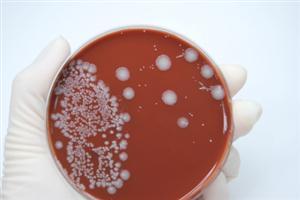
The Heat of Bacteria
Hard

In this experiment, we'll explore how extreme temperatures affect the growth of bacteria. We'll use different temperatures to see which ones kill the most bacteria.
Hypothesis
The hypothesis is that extremely high temperatures will kill more bacteria than extremely low temperatures.
Method & Materials
You will make a turbidity suspension in normal saline solution for each different bacterium, separate the solution between vials, label them according to their names and temperatures, store them at the respective temperatures, and then count the number of bacteria colonies killed.
You will need 7500 micro liters of Bacillus Cereus, Clostridium Perfringens, Mycobacterium Tuberculosis, and Salmonella, cotton buds, normal saline solution, 120 vials/test tubes with stoppers, 120 Petri dishes filled with blood agar, a box of disposable plastic pipette tips, a 10 micro liter pipette, a 250 micro liter pipette, a calorimeter, goggles, and a lab coat.
Results
The results of this experiment showed that extreme high temperatures killed more bacteria than extreme low temperatures. This information is important for scientists to develop effective methods for killing harmful bacteria.
Why do this project?
This science project is interesting because it explores the effects of extreme temperatures on the growth of bacteria, which is an important factor in understanding how to prevent contamination.
Also Consider
Variations of this experiment could include studying the nature of the bacteria used in the experiment and exploring other alternatives to kill bacteria.
Full project details
You can find additional information and details for this science fair project here. Have fun exploring!Related videos
Hey there! Here are some awesome videos about this science project that we think you'll really like. They're not only super fun, but they'll also help you learn more about the science behind the project. So sit back, relax, and get ready to have some fun!!
Share this Science Project:
Related Science Fair Project Ideas
Learn how to make water safe to drink using sunlight and plastic bottles!
Hard
Is irradiated chicken really the safest to eat? Find out in this science project!
Hard
Are your dental retainers as clean as you think? Find out by testing the bacteria levels on retainers that have been brushed with toothpaste, rinsed with mouthwash, and left without ...
Hard
Share this Science Project:
